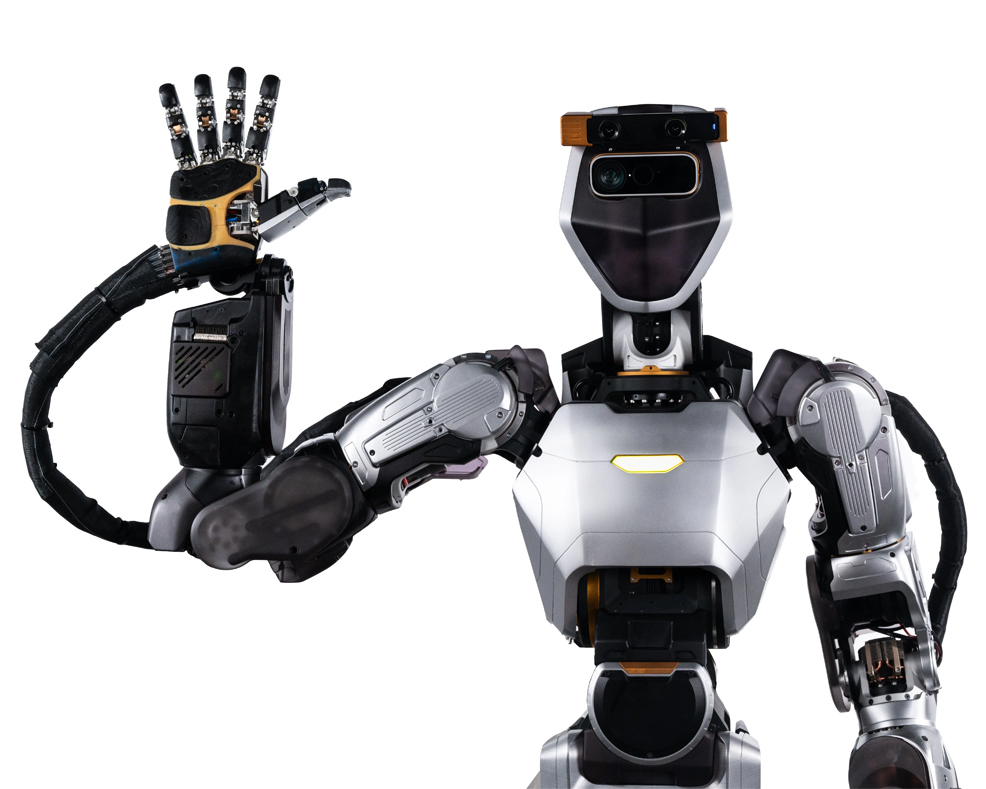
8th May 2024 Next-generation humanoid robot can learn 50 times faster Vancouver-based Sanctuary AI has revealed its seventh-generation Phoenix robot, which can automate tasks at a much faster rate. The firm has also partnered with Microsoft to bolster AI research and development.
As of 2024, there are now about a dozen humanoid robots at various stages of development by companies around the world, some of which we have covered previously on this blog. As part of the ongoing boom in AI, these machines continue to advance at a rapid rate, sparking both wonder and concern over their potential to overshadow human capabilities. The latest model to take a leap in development is Phoenix, a general-purpose robot by Vancouver-based company Sanctuary AI, which has now reached its seventh generation. This announcement of yet another upgrade comes less than a year after the sixth generation (one of TIME's best inventions of 2023) and only 16 months after commercial deployment of the fifth generation. According to Sanctuary AI, the seventh generation of Phoenix robots feature a more human-like range of motion. Improvements in uptime, visual perception and tactile sensing increase the system's ability to perform complex tasks over longer periods. This design iteration also significantly reduces both its material costs and build time. There has been a further miniaturisation of hydraulics, helping to lower the weight and power consumption. Perhaps most impressively, new tasks can be automated 50x faster than before – going from weeks to hours – marking a major inflection point in learning speed. Phoenix uses a control system called Carbon, which is provided with some of the highest quality, highest fidelity training data available.
Building on the foundation of Large Language Models (LLMs) – the algorithms that simulate human language for chatbots like OpenAI's ChatGPT – Sanctuary AI is making progress towards so‑called "Large Behaviour Models" (LBMs). These ground AI in the physical world by enabling systems to understand and learn from real‑world experiences. To date, the dexterous capabilities of Phoenix robots have been tested on 400 customer-defined tasks in 15 different industries, with a focus on automotive, manufacturing, and logistics. Sanctuary AI is now partnering with Microsoft on the development of these models for general-purpose humanoid robots, including Phoenix. The two companies will work together to bolster AI research and development, with Sanctuary AI taking advantage of Microsoft's Azure cloud infrastructure for training, inference, networking, and storage. "It's incredible to see the progress that has been made in just 11 months," said Geordie Rose, CEO and Co-Founder of Sanctuary AI. "With Generation 7, we have a system that we believe is the most closely analogous to a person of any available. We see this as not only the cornerstone of general-purpose AI robotics but a critical step on the path to artificial general intelligence, and we're thrilled to be leading the charge. This all adds up to being able to capture increasing quantities of higher quality, higher fidelity human behavioural data, which in turn will expedite the development of foundational AI models and customer deployments." "We're excited to be working with Sanctuary AI to accelerate AI model innovation and embodied AI research in areas like reasoning, planning, and human‑agent collaboration," said Ashley Llorens, Corporate Vice President and Managing Director of Microsoft Research. "Through our collaboration, Sanctuary AI will have access to Microsoft Azure infrastructure and services as they explore the future of general‑purpose robots that can assist across various use cases and industries."
Comments »
If you enjoyed this article, please consider sharing it:
|
||||||







